The Second Age of Tolkien’s tale will be the setting for the next Lord of the Rings television series. Sauron will undoubtedly serve as the series’ main enemy, just like he did in The Hobbit and The Lord of the Rings trilogy. However, the person who created the Ring was not necessarily evil. Sauron, who only appears in Peter Jackson’s original series, is a simple and intriguing antagonist.
He is referred to as “The Dark Lord, Sauron” when he first emerges and says that he “poured into his ring all his hate, rage, and desire to dominate all life.” Furthermore, it is believed that Sauron was always evil, yet this is untrue. This misunderstanding results from the trilogy’s superficial treatment of Sauron’s past.
Most of this bad guy’s “appearances,” if you could call them that, after the first revelation of the Ring’s origins are as the all-seeing eye atop Mordor’s tower: a disembodied, unsettling presence that resembles a god. Instead of being a real person, Sauron seems to be an idea, a particular kind of evil embodied.
However, the actual figure has a backstory, which is shown at the beginning of the “The Fellowship of the Ring” film and is expanded upon a little further in J.R.R. Tolkien’s work, The Silmarillion.
A brief backstory of this twisted antagonist
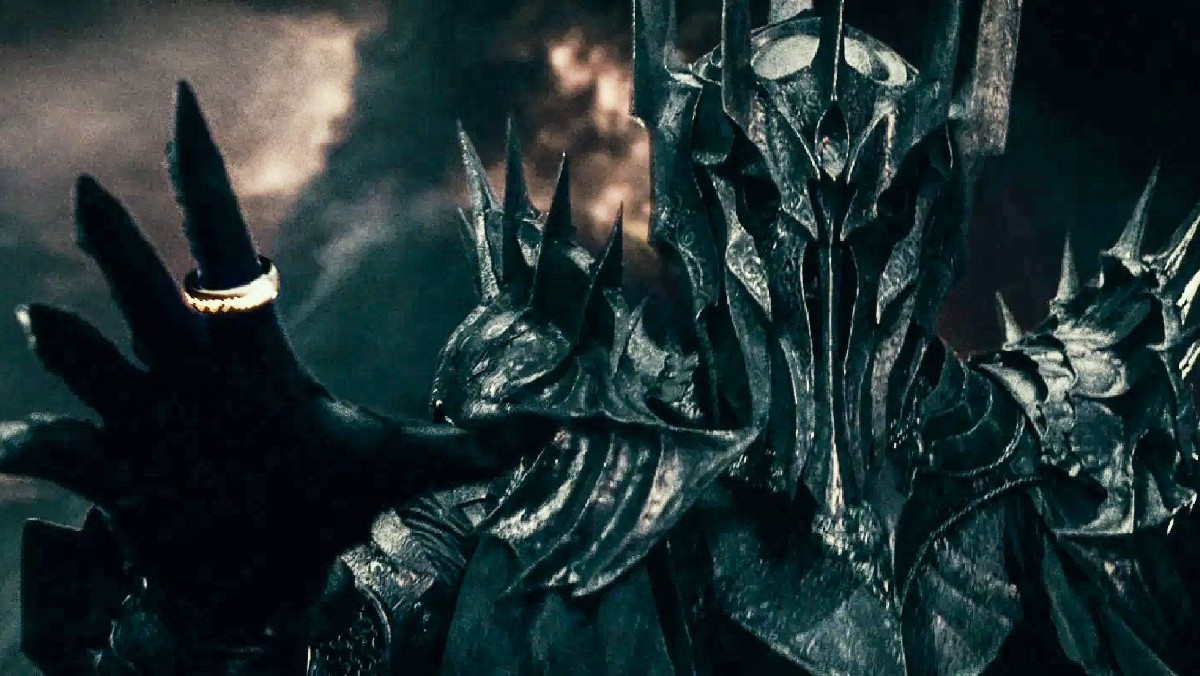
“The Lord of the Rings: The Rings of Power” will take us back to Middle-earth on September 2nd. The emergence and demise of the island nation of Numenor, which took place during the Second Age, will undoubtedly be covered in the programme.
That implies that in addition, we will likely see the story’s main opponent. Even if you have only recently seen Jackson’s films, you will be able to identify this villain. The fall of Numenor was mostly due to the Dark Lord, whose name was Sauron. He also lived through the Third Age, the exact time frame for the events depicted in the Lord of the Rings novels and films. But from where did he come, and how did he become so powerful in Middle-Earth?
The main antagonist and title character of J. R. R. Tolkien’s The Lord of the Rings is Sauron, who rules Mordor and seeks to unite all of Middle-earth by forging the One Ring. In the same work, he is also referred to as the “Necromancer” from Tolkien’s earlier masterpiece, The Hobbit. He was Morgoth, the first Dark Lordchief ,’s lieutenant, according to the Silmarillion.
The utter Satanic uprising and depravity of Morgoth and his satellite, Sauron, was by far the worst, according to Tolkien, who noted that all the Ainur, the “angelic” entities of his made-up story, had the capacity to commit various degrees of errors and failures.
Most often, Sauron appears as “the Eye,” appearing to be a ghost. While denying the idea of pure evil, Tolkien claimed that Sauron was the closest thing to an entirely evil being that was imaginable. Commentators have compared Sauron to both the Celtic mythical figure Balor of the Evil Eye and the title character of Bram Stoker’s 1897 novel Dracula. Although Sauron briefly appears as a human in Peter Jackson’s film series, he is typically portrayed as an intangible, flaming Eye.
Let us look at Morgoth, who was truly the very first Dark Lord of Middle-Earth, before we examine Sauron’s past. A Valar, he was. The First Dark Lord was once known as Melkor, and the Valar were some of Arda’s most potent beings. The supreme deity, Eru Iluvatar, made him.
Melkor, who has been around from the dawn of time, came to Arda with the other Valar. He began as a pure being, but eventually rebelled against his creator, adopted the name Morgoth, and was ultimately abolished from Arda and cast into the Void. However, before all of that, he attracted the attention of a different potential Dark Lord.
Mairon, “the excellent,” a powerful Maia — spirits that came to Arda to help the Valar create the universe — was Sauron’s first incarnation. Saruman and Gandalf are two additional well-known Maias. He was initially a chaste and disciplined being who was an expert forger. But he eventually turned egotistical and allied himself with Morgoth. It is important to remember that he did not always hold the same ideals as the first Dark Lord, Morgoth, even though he did obey him.
Mairon wanted to sway the people of Arda’s minds and wills, whereas Morgoth was consumed with conquest. Throughout his time with Morgoth, Mairon lied. He maintained his good looks, showing his allegiance to the other Valar. When Morgoth arrived in Middle-earth, though, Mairon dropped the act and vowed allegiance to the Dark Lord. At that point, he was given the nickname Sauron, which means “the abominable.”
Following Morgoth’s defeat by the Valar, Sauron took up the position of the next Dark Lord and attempted to rule Middle-earth and even Numenor by cunning manipulation – the Rings of Power being the most visible manifestation of this – or his overwhelming armies.
Evolution of Sauron: First Age, Second Age, Third Age, and Thereafter
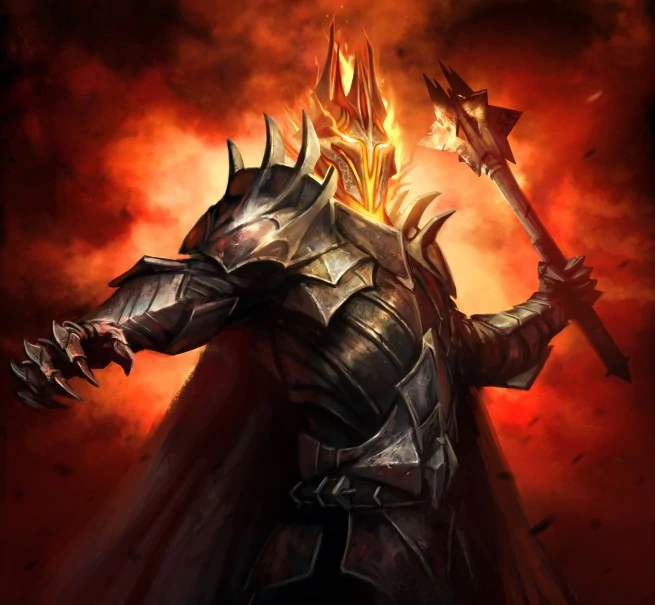
Mairon was Sauron’s original name. He was the fiercest Maia from the Vala Aul the Smith, and he learned a great deal from Aul about smithing and workmanship, becoming a brilliant artisan, and also excelled in the knowledge of Aul’s people. He was one of the Maiar with the most power.
Mairon was virtuous and uncorrupted at this time, just as Eru had made him. His greatest strength was his appreciation of perfection and order, as well as his disdain for waste. However, this would prove to be his undoing, as Mairon recognized in Melkor the determination and might that would allow him to achieve his very own goals faster than if he sought them alone.
Mairon’s ambition was to rule the thoughts and wills of Middle Earth’s creatures for what he saw to be their own advantage, but Melkor’s desire was to control or demolish Middle Earth itself. Mairon strove to strengthen his natural powers in order to see his wondrous schemes come to fruition, and this power became his aim in itself, so he was captured by Melkor, joining his following and eventually becoming his self-centered primary agent. Mairon retained his seeming allegiance to the Valar after joining forces with Morgoth, but covertly supplied Morgoth with details about their operations. Mairon left Valinor and officially proclaimed his allegiance to Morgoth only after Morgoth built his strongholds inside Middle-earth, making him a famous opponent of the Valar.
Shortly before Melkor’s capture, Sauron governed the stronghold of Angband and served as his lieutenant. The Valar troops leveled Angband with little effort at the commencement of the Battle of the Powers; however, it is unknown if the malevolent Maia was still there when the castle was under siege. After Utumno was plundered and Melkor imprisoned, Sauron was not to be seen, and in their rush to both capture and remove the Black Enemy from Middle Earth, all of the Valar paid little attention to the latter’s most horrible henchmen. The Sindar Elves who resided in Beleriand nicknamed him Gorthaur, which means “dread abomination.” At the same time, the rest of the Eldar called him Sauron, which means “the abhorred” and “the hideous,” making a joke of his actual name.
First Age
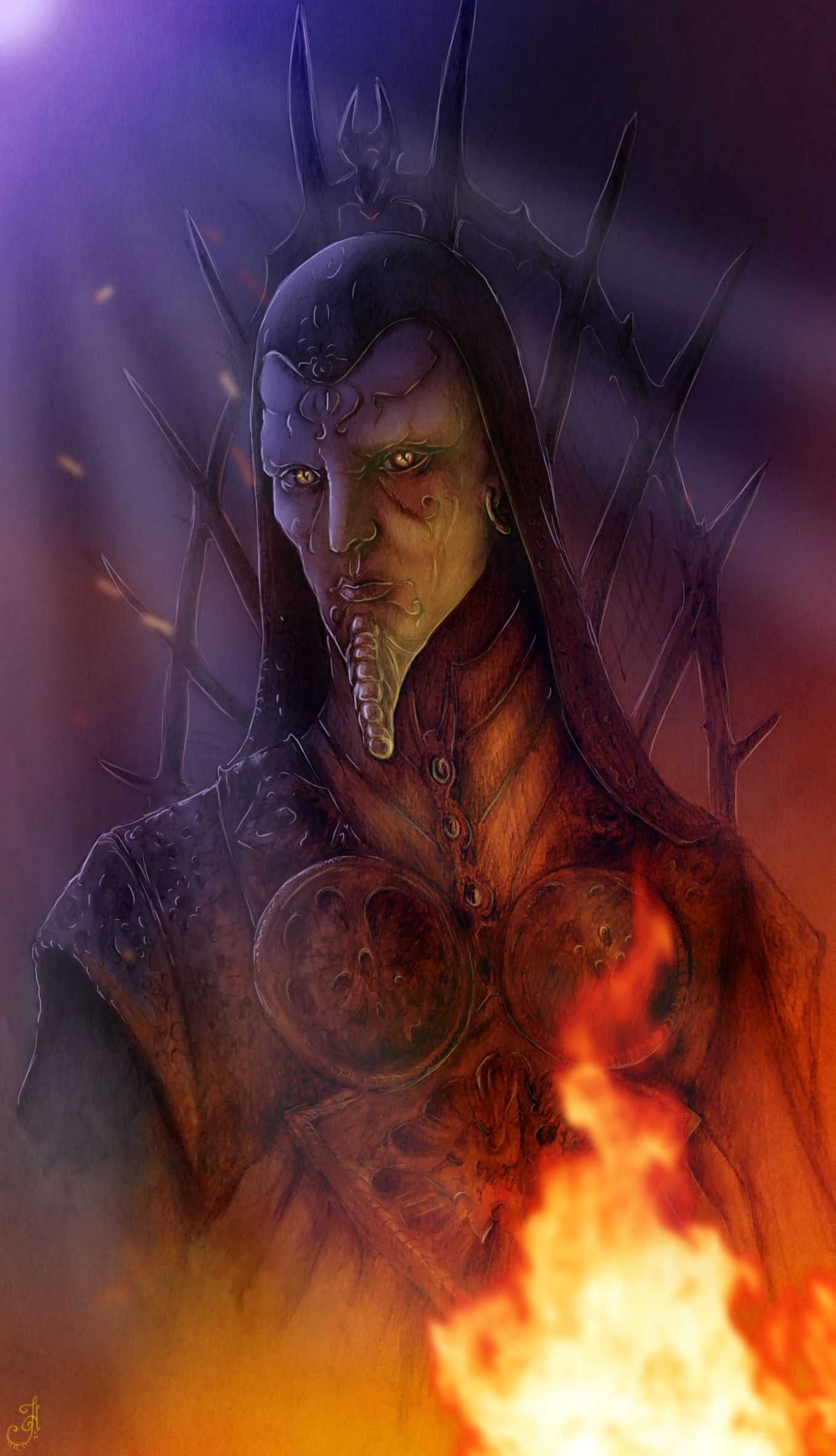
During the First Age, the Noldor Elves stopped being a part of the Blessed Realm, also known as the Land of Valinor, which was included in the Utter West, despite the Valar’s advice in order to declare war on Morgoth, who had stolen the Silmarils of Feanor, which were magical jewels that blazed with light from the now destroyed Trees of Valinor.
During the fight, Sauron was regarded as the “worst of Morgoth’s servers that have names,” and he became dreaded as a ruler of phantoms and terrifying monsters – a shape-shifter, magician, and clever servant of his king. When Morgoth departed Angband to corrupt the freshly awoken Atani Men, Sauron oversaw the fight against the Elves. He seized the Elvish region of Tol Sirion, renaming it Tol-in-Gaurhoth, or the Isle of Werewolves.
He had been the Lord of the Werewolves here, and Draugluin was the Werewolf’s sire. Thuringwethil, the vampire, was Sauron’s herald. After the battle of Dagor Bragollach in the FA 456, Sauron’s soldiers took Gorlim and quizzed him about Barahir, who was Beren’s father and asked to know his whereabouts. Gorlim refused to reveal anything to them, even under duress, until Sauron himself appeared and bargained with the man.
Gorlim requested that his bride Eilinel, who he believed was captured, be spared. Sauron agreed to his conditions and relented, and Gorlim divulged the information. However, Sauron later disclosed that Eilinel had died and then proceeded to execute Gorlim. Even during the Quest in search of the Silmaril, Finrod and Beren, who were Kings of Nargothrond, were abducted by Sauron, who beat Finrod in a battle with the songs of power.
He stripped off their disguises as Orcs and flung them inside the dark depths where werewolves butchered their comrades. When a werewolf attempted to kill Beren, Finrod battled and killed it before succumbing to his injuries. Huan the wolfhound and Luthien arrived at the Tol-in-Gaurhoth bridge not long after. Sauron dispatched wolves to abduct Luthien, but they were all murdered by Huan. Among them was Draugluin; however, he ran away and informed his Lord that Huan was present there. As a result, Sauron assumed the appearance of a werewolf and sprang to attack Luthien, only to be stopped and restrained by Huan. He gave up the tower to Luthien and fled while donning the disguise of a “vampire.”
Sauron had little involvement in the history of the First Age after being defeated by Luthien, and perhaps this happened because he tried to dodge Morgoth’s derision or fury. After his former Lord was destroyed and imprisoned in Valinor, Sauron appeared to repent and beg Eönwe and the triumphant Host in the West for compassion, but he may have been just terrified by their victory. At the same time, Sauron, out of pride, refused to go back to his home in the Utter West, fearing judgment, and instead, escaped and hid someplace in Middle-earth.
Second Age
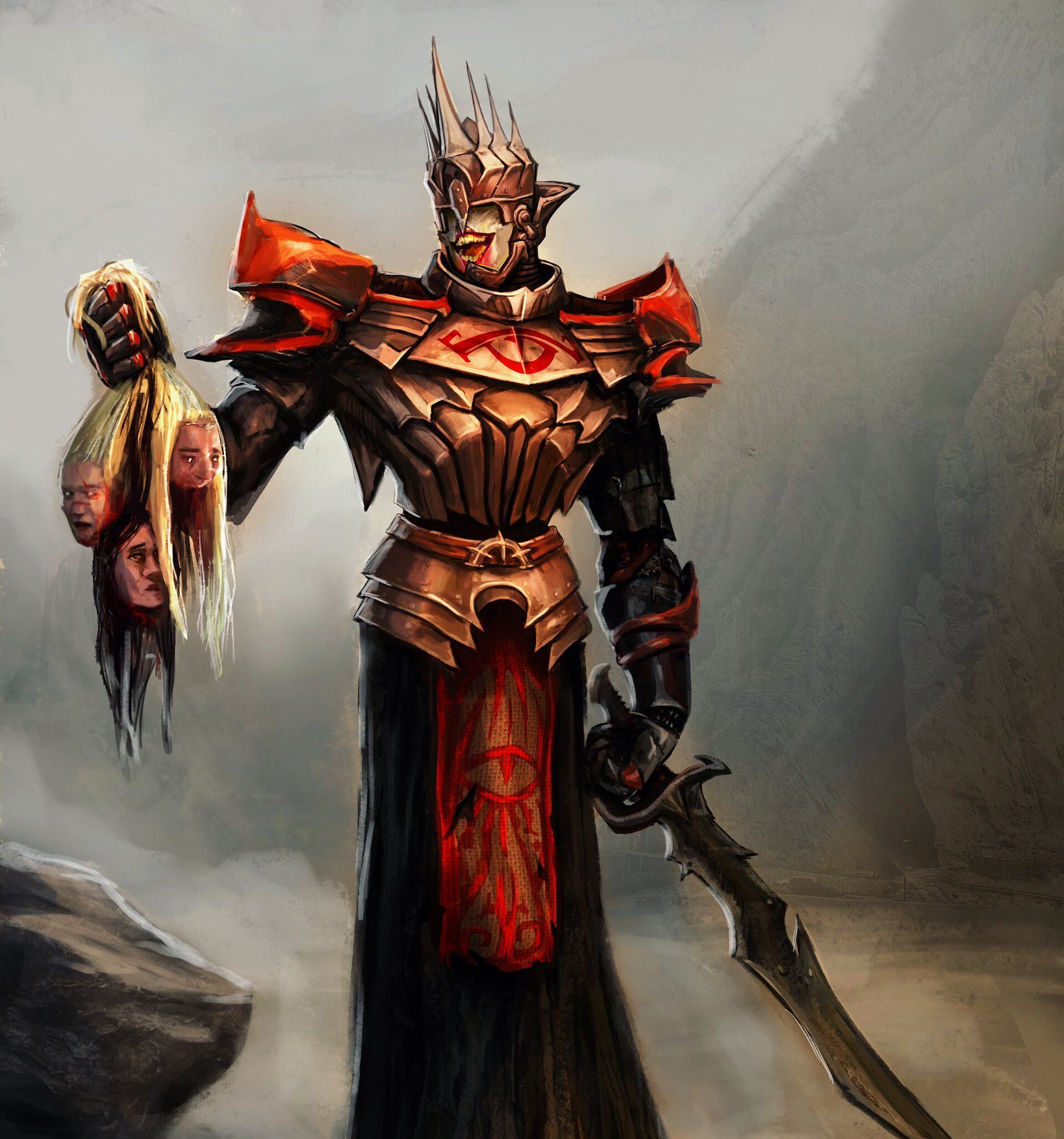
After lying hidden and inactive for almost five hundred years, Sauron started to unveil himself once again, and by the year SA 1000, he had acquired strength and reestablished himself in Mordor, in the eastern part of Middle-earth, and also began construction on the terrible land of Barad dûr, which was close to Mount Doom. Enormous armies of Trolls, Orcs and other Morgoth-era monsters were soon formed, and Sauron poisoned the minds of select Men, which included Haradrim and the Easterlings, with dreams of power and riches.
Although Sauron was aware that Men were more easily swayed, he attempted to obtain the assistance of the Elves, who were considerably more powerful. Around the year SA 1500, the Dark Lord Sauron changed his appearance and renamed himself Annatar, and was also known as “Lord of Gifts.”
Later, He became friends with the Elf smiths residing in Eregion, especially Celebrimbor, who was the finest of artisans and a descendant of Fëanor and counseled them in magic and the arts. Not all Elves completely trusted him, notably Elrond, Lady Galadriel, and Gil Galad, who was the Supreme King of the people of Noldor. Sauron imparted information and encouragement to all of the Elves who obeyed him while he secretly fashioned the One Ring to dominate the Elvish rings.
On top of the Ring, Sauron etched in Tengwar, the Black Speech, the inscription, Ash nazg durbatulûk, ash nazg gimbatul, ash nazg thrakatulûk, agh burzum-ishi krimpatul. This translated to: One Ring to rule them all, one Ring to find them, One Ring to bring them all, and in the darkness bind them.
But, as soon as The Dark Lord donned the Ring, the Elves detected his deception and removed their rings, before stowing them away safely. Enraged, Sauron launched an open war against them, demanding that all of the Rings of Power be handed over to him. The Elves were able to keep the three most powerful Rings hidden from him; however, the rest of the sixteen Rings of Power were all either seized, destroyed, or forgotten.
He had entrusted Seven to the Dwarves, but Nine to the Men, realizing they were going to be the fastest to be corrupted. The seven Dwarf Lords who obtained the Rings turned out to be highly resistant to Sauron’s influence, since they neither “faded away” nor were subject to his will. The Rings, on the other hand, instilled in them an unquenchable thirst for gold, causing the Dwarves immense pain.
All of the nine men had their minds poisoned by their Rings, as Sauron foretold, and turned into the Nazgûl, Sauron’s most ruthless and evil servants. The consequences would have been disastrous if the Elves had not detected Sauron’s deceit and abandoned the powers of their rings. Most of Middle earth’s original Men appear to have fallen to the influence of the Ring after the Nazgûl were formed, and had the Elves been caught in this manner, they, too, would have become Sauron’s slaves. As a result, Celebrimbor’s opposition was crucial in the story of Middle-earth.
Sauron became famously known as the Dark Lord and ruler of Mordor during this period, during which he mobilized and commanded large armies, and his stronghold of Barad dûr was finally constructed in the year SA 1600. Despite all the hurdles in his path, he was still very formidable even without the command of the Elves, and he conquered virtually all of Middle-earth in the War of Sauron and the Elves.
However, the soldiers of Tar-Minastir, King of Numenor, proved to be able to conquer Sauron in the War of the Gwathló in the year SA 1700. Sauron was defeated but not entirely crushed, and he fled back to his stronghold in Mordor and continued rebuilding his power through the years. Toward the conclusion of the Second Age, The Dark Lord Sauron once more became strong enough to mobilize enormous armies and seek to control Middle-earth.
Interestingly, by this time, he had claimed the titles “King of Men” and “Lord of the Earth,” which infuriated the Numenóreans; the mighty Men descended from the men who had fought with Melkor during the Battle of Wrath. Some of them were Luthien’s and Beren’s descendants via Elros.
These Men resided on Numenor, an island in the sea separating Middle Earth from Valinor. The Numenóreans, who were proud at the time, invaded Middle Earth with incredible might of weapons. King Ar Pharazôn, who sought nothing less than the throne of Middle Earth, led his armies the whole way to Mordor, while not fighting a single battle, and ordered that Sauron humble himself before the Ruler.
Even the strongest and most powerful of Sauron’s underlings could not stand up to the Numenóreans, so he returned from Barad dûr without even a promise of war. He took on a beautiful appearance and pleased Ar Pharazôn; however, the King ordered that Sauron return to Numenor as a captive. Sauron seemed to be disappointed by this development, but he was secretly happy since it provided him with a chance to annihilate the Numenóreans from the inside.
After only a few years in Numenor, he rose from prisoner to the King’s closest and trusted counsel, and practically the entire King’s court loved him and fawned over him. Using their dread of death, he persuaded many Numenóreans to worship Morgoth, claiming that Morgoth would have the ability to protect them from death.
As his authority and power grew, he built a massive temple inside which he sacrificed humans to Morgoth. Eventually, he persuaded Ar Pharazôn to revolt against all the Valar and strike and conquer Valinor and have it for himself. But Sauron’s ingenuity overreached itself here, and Eru interfered directly—Numenor was submerged under the sea, and the vast navy of Numenor was destroyed, and the army that extended to Aman was buried beneath mountains of crumbling rock and trapped inside the Caves of the Forgotten.
The universe was twisted such that only the special Elven Ships could sail towards the Utter West from then on. Sauron’s physical form was destroyed, but his soul was not weakened, and he escaped back to Mordor along with the Ring, where he gradually constructed a new body for himself and worked on his might.
He lost his capacity to take on a fair shape beyond this moment and governed his people with an iron fist now via intimidation and force. A few devoted Numenóreans commanded by Elendil were spared from the terrifying flood, and they established two Realms while in exile – Gondor and Arnor – in Middle-earth. After discovering that Elendil, who he had especially despised, had lived and was establishing a kingdom on his frontiers, Sauron declared war on them.
However, he was overconfident, and struck too soon and had not recovered most of his power, but on the other hand, the Elven king, who was named Gil Galad, had grown his power in Middle-earth during his absence. As a result, when Gil Galad joined forces with Elendil to form the Final Alliance of Men and Elves, they jointly battled Sauron. During the War of Dagorlad, they defeated his army and laid siege upon Barad dûr for almost seven years.
Eventually, Sauron appeared and dueled Gil Galad and Elendil, defeating them both single handedly; nevertheless, he was overthrown during the process. After this incident, Isildur, who was Elendil’s son, picked up his father’s shattered sword, which was named Narsil, and utilized it to sever Sauron’s finger from the One Ring, separating them both.
Sauron’s corporeal form was destroyed, but his soul survived and escaped. But his mission to destroy the free peoples appeared to have failed, with his most powerful weapon stripped from him. But, having obtained the Ring, Isildur could not allow himself to burn it in the flames of Mount Doom, which was the location of the Ring’s creation, and instead retained it for himself. He was finally betrayed by the Ring and killed by Orcs while at the Gladden Fields a few years later. The Ring was lost for about two millennia after falling into the Gladden River.
Third Age
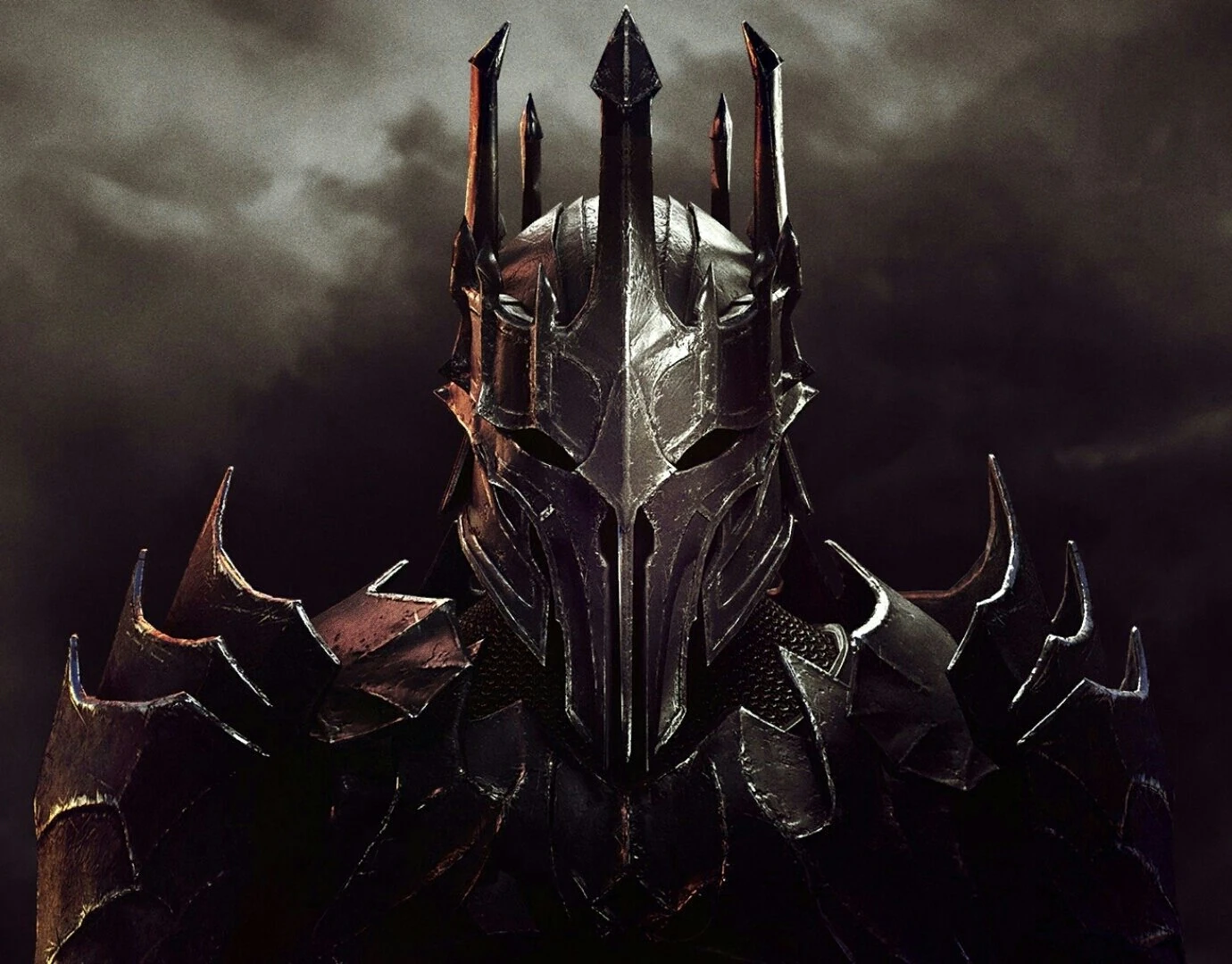
Despite his downfall, Sauron was not completely defeated. In spite of being significantly weakened and in a non-corporeal state, he nonetheless survived as a result of putting the majority of his innate power, energy, and willpower inside the One Ring. As long as it remained, he would never be totally defeated, and for the first one thousand years of the Third Age, Sauron remained in hiding, steadily regaining his power before he was once more ready to assume corporeal form. Sauron finally began to rise anew in the year TA 1000, taking the fortress of Dol Guldur and the Hill of Sorcery in the southern Mirkwood in the year TA 1050.
He disguised himself as the terrible wizard known by the name “the Necromancer” there, and the Elves were first unaware that he was the secret Dark Lord. During this period, the Valar dispatched the five Wizards, also known as the Istari, which included the famous Gandalf the Grey, who subsequently transformed into Gandalf the White, to resist Sauron and organize the free peoples living in Middle-earth against his possible return. While the Dark Lord gathered power, the Nine resurfaced in the year TA 1300 and began systematically attacking the Numenórean kingdoms in exile, eventually conquering the Northern kingdom of Arnor and severely damaging the Southern kingdom of Gondor.
During the same time period, vile things that still wandered on the ground or under it were triggered: Orcs became more daring in their intrusions while dragons destroyed the Dwarven palaces, devouring three of the Seven original Dwarf rings and seizing the wealth hoards. The Easterlings also rekindled their longstanding war with the Northmen and the Gondorians, launching new raids on the western kingdoms, aided by The Dark Lord’s ambassadors. Gandalf, the wizard, invaded Dol Guldur in the year TA 2063 to prove his claim that Sauron had truly come back and that his hand orchestrated the slow rebirth of darkness, such as the activities of the Nazgûl; however, the Dark Lord retreated eastwards to disguise his identity.
This marked the start of the era known as the Watchful Peace, which concluded with Sauron’s reappearance at Dol Guldur with increased vigor in TA 2460. The Stoor Sméagol, as well as his buddy Déagol, discovered the One Ring the same year. Sméagol assassinated Déagol and grabbed the Ring to keep it for himself. Sméagol was eventually so damaged by the Ring’s evil that he was coined the name Gollum and compelled to hide inside the Misty Mountains. In TA 2850, Gandalf the Grey returned to Dol Guldur and realized that the Necromancer was, in fact, Sauron. In TA 2941, the White Council used its strength to expel Sauron from Dol Guldur forever.
Without the Ring and confronting the combined force of all the three powerful Elven rings and Saruman’s expertise, Sauron could only summon a fragment of his strength, allowing his adversaries to expel him from Dol Guldur easily. Nonetheless, the Dark Lord, who had enough time to prepare, willingly abandoned Dol Guldur and returned covertly to Mordor, wherein he officially revealed himself in TA 2951 and began preparing for his last war to rule Middle-earth. Sauron raised massive legions of Orcs and collaborated with and subjugated Men hailing from the east as well as the south. He collected his most fearsome servants, who were called the Ringwraiths, or Nazgûl, each donning one of the powerful nine rings created for mortal men.
He adopted the emblem of a lidless, large eye, and as he asserted his dominance over all of Middle-earth, the terrifying Eye of Sauron went on to become a symbol of strength and dread. Sauron interrogated Gollum after capturing him and learning that he previously possessed a magical ring and had heard the phrases Baggins and Shire from it. He inferred that the Ring Gollum was referring to was the original One Ring, and in the year TA 3017, he dispatched his servants, the terrible Nazgûl, to look for the Shire and seek Baggins in order for the One Ring to be retrieved and brought back to him.
Meanwhile, Sauron also enlisted the aid of Saruman the White, who was an Istari and employed him to attempt to eliminate Rohan, one of the most significant hurdles to Sauron’s takeover of Gondor and the surviving Elves. Saruman, on the other hand, failed, so Sauron ended up sacrificing one of his most potent and most influential vassals, in addition to also losing Saruman’s massive Uruk-hai army. Peregrin Took, shortly after Saruman’s fall, glanced into the Palantir that the wizard had had and unwittingly connected with Sauron, who assumed that his traitorous servant had caught either the Halflings wearing the Ring or anyone who may know where it was.
However, Aragorn soon took the Palantir and presented himself to the evil Sauron, and upon seeing Aragorn, the terrifying Dark Lord reasoned that Saruman had perished and that the successor of Isildur had the One Ring. Fearing that his adversaries would utilize the Ring to defeat him, Sauron accelerated his plans and struck the region of Minas Tirith, which was in Gondor, earlier than planned, hoping to bulldoze the town and smash the last resistance movement to his regime before his adversaries could strengthen it, and to avert the Men who lived in the West from joining forces under one king. Sauron’s army was crushed as a result of the united efforts of Rohan, Gondor, and the Dunedain of Arnor.
Despite having more than adequate military might to demolish Minas Tirith and rule Middle-earth quickly after Gondor fell, Sauron’s doubts started to develop. As such, he sat and waited, expecting a reign of contention between Aragorn as well as other possible Ringlords, during which he might move in and seize the Ring and take it for himself. Despite successfully repelling Sauron’s soldiers at Minas Tirith, Aragorn and Gandalf understood that the majority of Sauron’s army remained in Mordor, preparing for a fresh, more lethal attack on the city. Frodo Baggins had practically no hope of ever reaching Mount Doom unnoticed in Mordor, which was teeming with Sauron’s armies.
In light of the circumstances, Aragorn convened a council of the chief officers of all the armies gathered in Minas Tirith, then designated Gandalf as their leader until the crisis passed. Gandalf made it evident to everyone present that, even with their tremendous triumph, they could never hope to vanquish Sauron’s troops by force. As a result, they had two choices. They might station their remaining army, which was far more extensive than it had ever been before the fight, thanks to reinforcements that came from Rohan and the south of Gondor, at Minas Tirith in order to attempt to withstand Sauron’s next onslaught. They may even take a group to the looming Black Gate and confront Sauron personally.
As Gandalf indicated, this group would only have to be large enough to offer combat, with the remainder of their troops remaining behind to guard Minas Tirith. This alternative, while dangerous for everyone concerned, would help to divert Sauron from staring into his own realm, across which the Bearer of the Ring would have been going. Furthermore, Gandalf hypothesized that if Sauron knew that an army too small to pose an actual threat to his powerful troops was on its journey to the looming Black Gate to invade Mordor openly, he would likely think that the commander of the invading army possessed the One Ring.
Sauron would suppose that the Ring would itself influence its user, who, in his arrogance and overconfidence in his newly acquired power, could be stupid enough to confront Sauron’s strength with an army too small to attack Mordor in earnest. Their plan worked, as Sauron rallied the majority of his surviving soldiers and led them to Udûn to defeat the army of Men of the West and reclaim his treasure.
This act of Sauron meant that the Plains of Gorgoroth were substantially unattended, and this enabled Frodo and Sam to climb Mount Doom with significantly less trouble than they would have otherwise. However, as Frodo arrived at the Cracks of Doom, the influence of the Ring started overpowering him, and he began succumbing to the Ring’s powers, and he put it on.
Sauron suddenly took notice of the Hobbit and turned his eyes to the mountain. He quickly dispatched the Ringwraiths to reclaim the Ring, but it was now too late as Gollum had snatched the Ring from the hands of Frodo, and he then tripped and plummeted to his demise inside the Cracks of Doom.
The Ring was then unmade. The earth trembled as a tremendous sonic boom rippled throughout Mordor, and the roots of Barad dûr finally were shattered, bringing the ancient stronghold to collapse into rubble once and forever. Mount Doom’s cone shattered in a violent explosion, consuming the last eight Nazgûl. Now with his supply of strength gone, Sauron was utterly beaten, and his troops were slaughtered or scattered, devoid of the driving desire that fueled their conquest.
With the Ring’s obliteration, Sauron was stripped of his tangible body for good, minimizing him to a malignant spirit that drifted above Mordor in the form of a massive shadow, lightning-crowned, impenetrable, terrible but also impotent, only to be blown away by a gust of wind; he had ended up on the same route as his former master, Morgoth, cast aside into the Void, punished to be a sleepless entity that fed on itself to survive. With the disintegration of the powerful Ring, the central part of Sauron’s essence and power were eternally destroyed. Sauron’s strength was permanently weakened, and the danger of his rule was forever eliminated.
Sauron in Rings of Power TV series

Early teasers for The Lord of the Rings show, named The Rings of Power, were jam-packed with visuals and characters recognizable to fans of J.R.R. Tolkien’s Middle Earth. Amazon’s teasers have shown fans events they’ve been dreaming about for decades, from vistas of the island realm of Numenor to scenes from the First Age. However, the show’s trailers have also highlighted freshly developed stories and characters, including three enigmatic, white robed individuals. Following their debut appearances in The Rings of Power’s Comic Con teaser, suspicions began to circulate that the trio’s captain was probably none other than the infamously evil Dark Lord, Sauron.
While it appears that this is not the case, the terrifying Rings of Power triad does appear to be linked to Sauron in one essential aspect. There is currently very little information available regarding the three shrouded characters depicted in the two very latest Rings of Power teasers.
Fans, on the other hand, believe they are followers and a part of the Cult of Melkor, which is a cult dedicated to Middle earth’s first Dark Lord, who was also Sauron’s former lord and master. Melkor was expelled from Middle Earth at the conclusion of the First Age; however, his influence on Tolkien’s world is felt throughout the Second Age, the period which The Rings of Power is based on.
The worship of Melkor, often also known by the name Morgoth, is central to one of Tolkien’s Second Age tales. That fact, along with the priestess-like style of one member’s clothing, suggests that The Rings of Power’s most enigmatic three are really Melkor’s disciples. Sauron hid in Middle Earth for roughly 500 years following Melkor’s fall. When he eventually emerged from the shadows, he proceeded to stealthily poison the Men who lived in Middle Earth and entice them into serving him.
Later, Sauron makes use of Melkor’s heritage once more to his advantage. Sauron encourages the monarch of a major kingdom to begin serving Melkor in order to eradicate the most significant challenge to his rising dominance inside Middle Earth. Sauron then proclaims his own self as High Priest of the evil Cult of Melkor and takes the nation’s inhabitants on an ethical downhill spiral that ends in the sacrifice of humans.
As a result, it would actually make logical sense for Sauron to exploit any remaining Melkor followers in Middle Earth to aid him in gaining control. Not only does canonical evidence support that hypothesis, but it also appears considerably more plausible that these three people are on a quest at Sauron’s behest, instead of one of them being Sauron himself. We won’t know whether the figures depicted are Melkor cultists until the actual premiere of The Rings of Power.
The trio’s commander appears to be a cult member, so fans should brace themselves for the potential fact that Sauron is possibly already recruiting his former master’s believers by the point The Rings of Power begins. That idea appears to be more plausible than any other one around The Rings of Power’s unusual and formidable new trio.
The wicked Sauron is the focus of a new official trailer for the upcoming Prime Video program about The Lord of the Rings, named The Rings of Power. “The adversary does not sleep. It is patient”, Galadriel, played by Morfydd Clark, says in the teaser, which primarily comprises of previously released Rings of Power footage. “A wicked and devious sorcerer. He has more than one name. He was known to us as Sauron.” the narration states.
Of course, Sauron, the maker of the One Ring, is the title principal enemy of J.R.R. Tolkien’s series, The Lord of the Rings, in addition to Peter Jackson’s film series of the same name. Sauron was physically depicted by Sala Baker and narrated by Alan Howard in the Peter Jackson movie, The Lord of the Rings. Benedict Cumberbatch voices Sauron in Peter Jackson’s cinematic trilogy version of J.R.R. Tolkien’s The Hobbit.
The first two episodes of The Rings of Power will be available on Friday on Prime Video, on the second of September. The first season of the fantasy series will include eight episodes.
What Motivates Sauron To Be This Destructive Entity, And What Is His Fall?
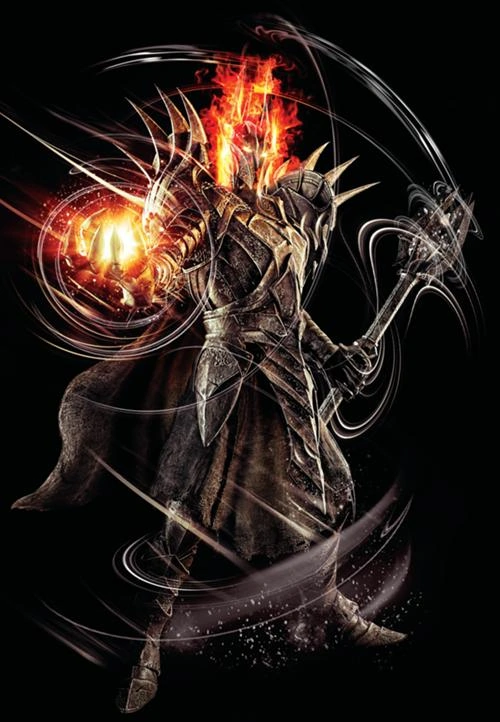
Sauron, as the main antagonist of the Second as well as the Third Ages, raises many doubts about his motivations. How did he turn into the vile figure that we know and respect? Why would he risk sending a large portion of his natural strength into the One Ring, knowing that it may lead to his demise? Let us examine his descent and motivations through the lens of Tolkien’s own tales and letters. Despite having risen like Morgoth’s shadow, Sauron was not the same as his former master. His downfall was neither the result of noble intentions nor was he the originator of dissension. Sauron came from the Maiar, spirits born from the thoughts of Iluvatar.
He existed before the physical universe was formed. Originally, Sauron, known as Mairon or also the Admirable at the time, was linked with the inhabitants of Aul, and as a result, he was an extremely skilled craftsman. As the Maia shifted sides, his title Mairon was no more used by other individuals, though he continued to refer to himself as Tar-Mairon or King Excellent until the time of Numenor’s downfall. The Maia’s authority as Morgoth’s lieutenant was already a source of pride for him. Because of his actions, the inhabitants of Middle Earth dubbed him Sauron, meaning the Abhorred, or even called him by the name Gorthaur, which meant the Terrible Dread.
It was, however, a virtue that drew Sauron into Morgoth’s service and ultimately led to his destruction. The Maia valued order and despised chaos. Add to it his passion for power, and Sauron’s motivations for changing allegiances become evident. Morgoth’s ability to rapidly and efficiently bring Sauron’s schemes to life was a crucial factor in his determination to become a part of the Dark Ainu’s army. His service on the evil side corrupted Sauron with Morgoth’s desire for power, and his good intentions finally went horribly wrong.
Still, an examination of Sauron’s motivations and personal storyline reveals him to be a more intelligent, logical, and reasonable evil than Morgoth. He lacked Morgoth’s nihilism; therefore, he was able to preserve rational reasoning and make his actions thoughtful and well-planned. In an already damaged realm, Sauron entered the service of Morgoth. Because the Maia obeyed another deity for a long time, he did not sink so low and didn’t lose his abilities as Morgoth did. He still was able to take a fair form far into the Second Age, indicating that he had not yet been completely corrupted to the stage of being unable to appear attractive.
This was never to last, however, since Sauron’s next path was a downhill spiral. Morgoth, on the other hand, lost the capacity to change his form at whim at the start of the First Age and was no longer capable of concealing his hatred with good looks and became irrevocably incarnate. After Morgoth was defeated in the War of Wrath, the wicked Sauron repented, although out of fear, but because Manwe’s messenger Eönwe could not pardon all those from his own kind, Sauron was to travel to Valinor and meet Manwe personally. That Sauron couldn’t do that for fear of being humiliated. Furthermore, he was accustomed to the control he possessed while serving Morgoth and was unwilling to relinquish it.
As a result, Sauron remained in Middle Earth. His early goals were fair, or at least cloaked in fair forms, just as they were when he joined Morgoth. Sauron sought to aid in the restoration of Middle Earth following the devastation caused by the War of Wrath. His lovely words, bolstered by his fair looks, were just what the Elves desired. So, with the exception of Gil Galad and Elrond, they listened to him and followed his instruction. It eventually resulted in two things. Tolkien described Sauron’s first aim to cure the regions of Middle Earth as a “veiled attack against the gods.” In his heart, Sauron believed that all the Valar had forsaken Middle-earth and no longer cared about it.
As a result, he advocated for making Middle-earth as lovely as Valinor and for maintaining these areas free of degradation. By doing so, Sauron put the Valar to the test in his quest to establish a utopia on the opposite or other side that lay beyond the Sea. This, along with his ever-increasing pride, fueled by others’ appreciation for his vast knowledge, spurred his desire for Total Power. But, as an eternal spirit, he aspired to be the God-King, not merely the Lord of the entire World, as his servants perceived him. Tolkien claims that if he had won, he might have demanded divine honor from all rational beings, as well as unlimited temporal sovereignty over the entire globe. It is here that the Rings of Power come into place.
We understand that Sauron did not have anything against the survival of the world, as long as he was able to do whatever he pleased with it, thus he created the One Ring to accomplish this. Unlike Morgoth, he had no desire to reduce the world to ashes, but rather aspired to dominate the thoughts and free wills of others, with the Elves being his primary objective. He invested a significant portion of his own power and might inside the One Ring in order to achieve his goal.
It included the abilities of the minor Rings of Power, allowing Sauron to “see the minds of all individuals who wielded the lesser rings, rule all that they accomplished, and in the end, entirely enslave them.” He could not, however, fool the Elves, who he despised and wished to enslave, for they concealed their Rings once they realized Sauron’s intents and never even used them when he was in control of the One. Sauron did, however, partially accomplish his goal. When he had the Ring on, he was capable of enslaving and governing vast swaths of Men who had not yet interacted with the Elves. His kingdom was, therefore, continually expanding.
The strength that the Ring possessed was in accordance with Sauron: if he donned it, his own might was amplified; nevertheless, even though the Dark Lord chose not to wear the Ring, he still could influence it from afar. So, after being separated from its master during the War of the Last Alliance, the Ring was continually striving to return to him, abandoning those who came into possession of it by slipping away in the worst of times, doing everything in its power to rejoin with the hand that fashioned it. This desire grew much more potent when Sauron reappeared after his defeat.
Despite containing a significant amount of Sauron’s own powers in it, the Ring’s premise had numerous fundamental flaws. The first was that anybody with enough strength and resolve might seize the One, oppose Sauron, and finally depose him from the role of Dark Lord. Because very few people in Middle-earth had the capacity to do it, it did not appear to be a very severe danger to Sauron. Another concern was that the Ring’s destruction would reduce Sauron to a shadow and, as a result, lead to his defeat. It caused some challenges, however, for the Ring could only be unmade by Sauron’s own smithcraft or even in the flames of Orodruin, where it was fashioned, and nowhere else.
Getting into Mount Doom was indeed a tremendous task — an impossible quest for an average person to perform on an average day — therefore, Sauron merely did not take into account this possibility. Another element was the fact that even if someone did reach the Orodruin flames, they would be unable to throw the Ring down due to the grip it held on anyone who had it. We recall how the One met its end by good accident. Because of the Ring’s dreadful pull on him, Frodo also couldn’t bring himself to toss it into the fire, and Gollum, having snatched the Ring from the hands of the Hobbit, walked much too close to the edge and plunged into the flames with “his Precious.”
In his arrogance and pride, Sauron did not even consider that a simple stroke of chance could interfere with his designs and that a simple accident could cause things to go drastically wrong for him, so he did not even consider the other option either, even though he appears to have been well aware of both vulnerabilities in his Ring design. Growing increasingly arrogant, Sauron made a typical it-would-never-happen-to-me error — an omission that proved fatal. In his desire for Absolute Evil, he came dangerously close to actually becoming Absolute Evil, but missed and followed Morgoth “on the same disastrous path down into the Void.”
What makes Sauron so powerful?
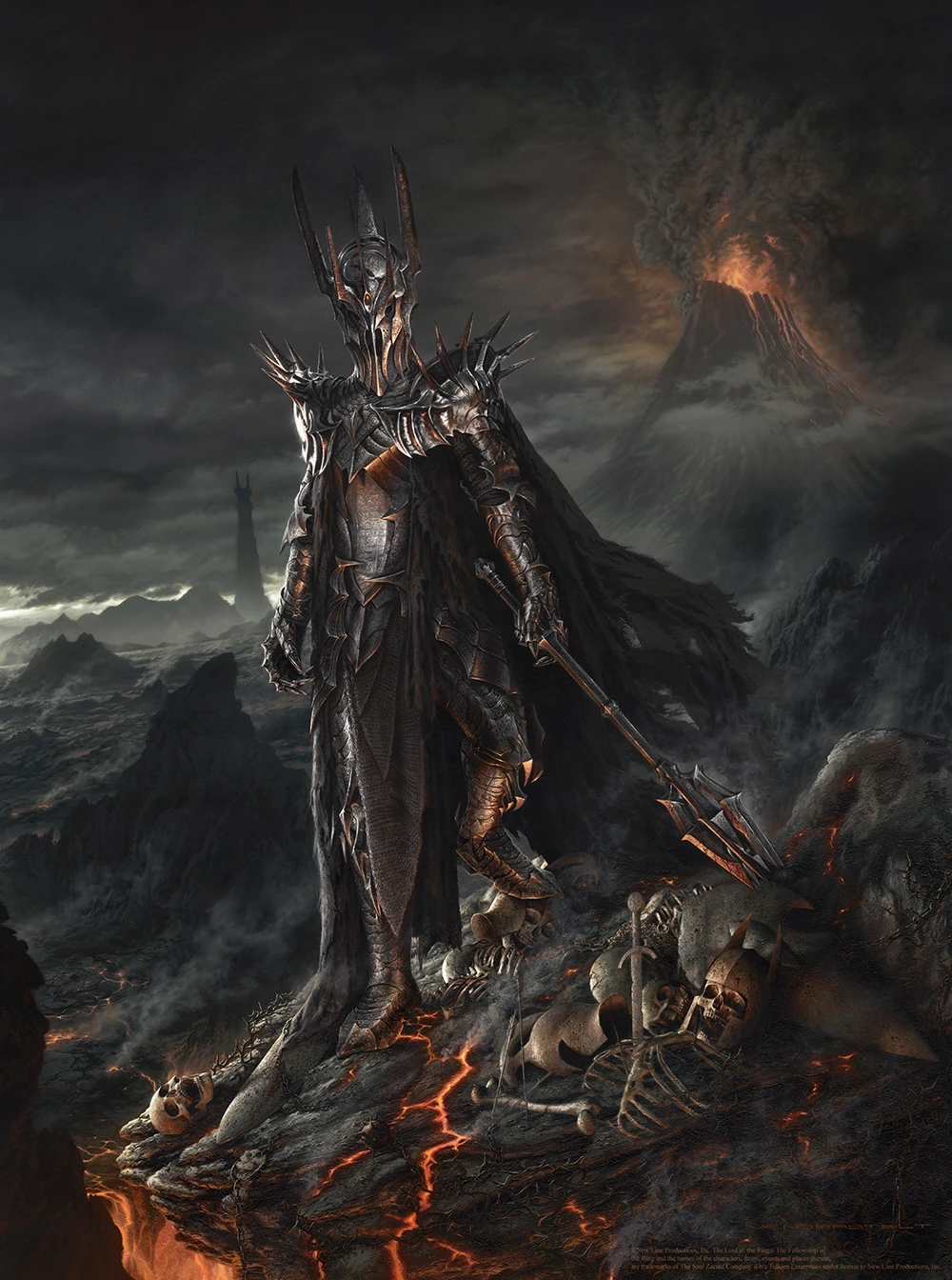
Sauron, being one of the most powerful Maiar, is physically superior in every way. He possesses Enhanced Physical Prowess. Sauron, being an ethereal creature, is resistant to ordinary firearms and weapons. Sauron has the ability to assume any shape he wishes. However, since his master’s demise, he has been unable to take a fair form, making him a skilled shapeshifter. He can also perform Telekinesis and use his thoughts to lift items around him.
Sauron, like Morgoth, has been proven to be able to alter the universe to his liking, basically allowing him to change the battleground at will. For instance, he has complete control over Mt. Doom’s eruptions, to the degree that he exploits its lava chamber as a weapon foundry. He also has the ability of World Manipulation. Sauron may even call meteors from the skies to annihilate battalions of humans around him. Sauron is impervious to fire-based assaults. He once stood amid a mountain of fire and never flinched. Sauron’s spirit, being a Maia, has lived from the beginning of time and, therefore, cannot be permanently destroyed, making him theoretically eternal.
If Sauron’s body is ever destroyed, he will undoubtedly reconstruct it in a few decades. However, his power is not restricted to himself since he has previously revived Orcs in a fight. He also can Shadow walk, which implies that if Sauron ever has to reduce the distance between himself and his adversaries, he may wrap himself in shadow and teleport, healing himself somewhat in the process. Sauron has the ability to identify any foes hidden in his area. His piercing stare frightens foes, prompting the weak willed to flee in fear, inflicting injury on themselves. Sauron, like his famed Eye, can scan across a whole nation for hidden opponents.
Sauron has twisted and deceived innumerable beings during his endless life, even deceiving the Elves into creating the famous Rings of Power for his selfish gains. He is an expert manipulator. He has evolved into a superb tactician and planner in combat as a result of his experiences as Morgoth’s commander and also as Mordor’s king. Mordor has grown into one of Middle Earth’s most ferocious armies under his command. Sauron, like his master, used an enormous mace in battle. Little is known about his weapon, yet it has been demonstrated to disperse armies of both Elves and Men with a single strike.
Conclusion
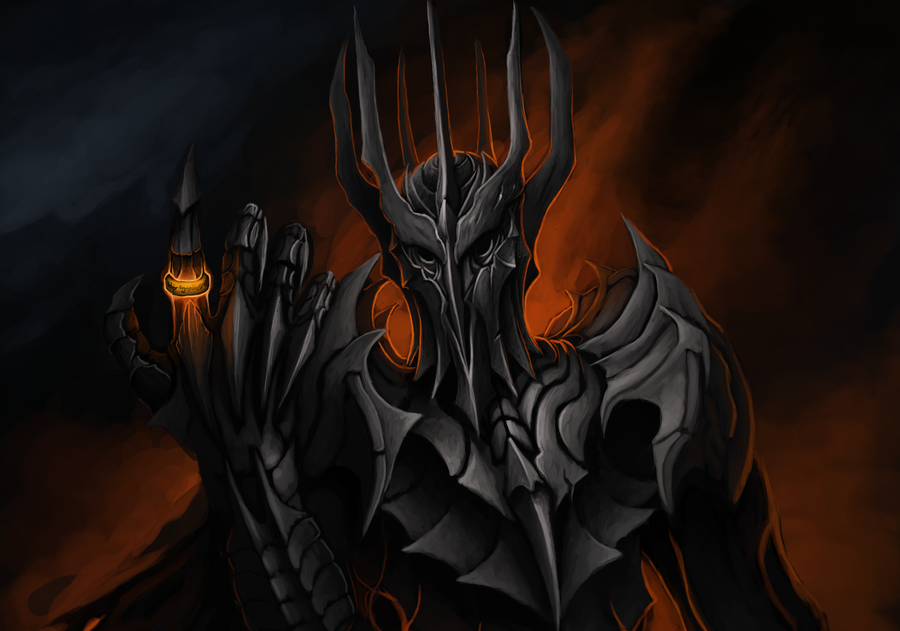
Sauron has not always been wicked; he has a kind heart. It is his excess, his fixation with his order and discipline, that transforms him and makes him the Dark Lord. Indeed, while he is the principal enemy in the trilogy of the Lord of the Rings and definitely has terrible goals, he is not an evil incarnate being even then. His motivations, although self-centered and evil, arise from a personal preoccupation with orderliness – something immaterial and ethically neutral. His fixation, on the other hand, leads to indisputably wicked actions.
